At The Fair On Opening Day 7/9/2009 (Page Two)
Wow what an ordeal to get here. Seems the fair was overloaded today and we had to park 30 minutes away behind a gym in a local college! We made it but not without questioning our sanity. After eating at Ambrosia, the hamburger looked terrible.

After lunch at Ambrosia, a hamburger did not look good!
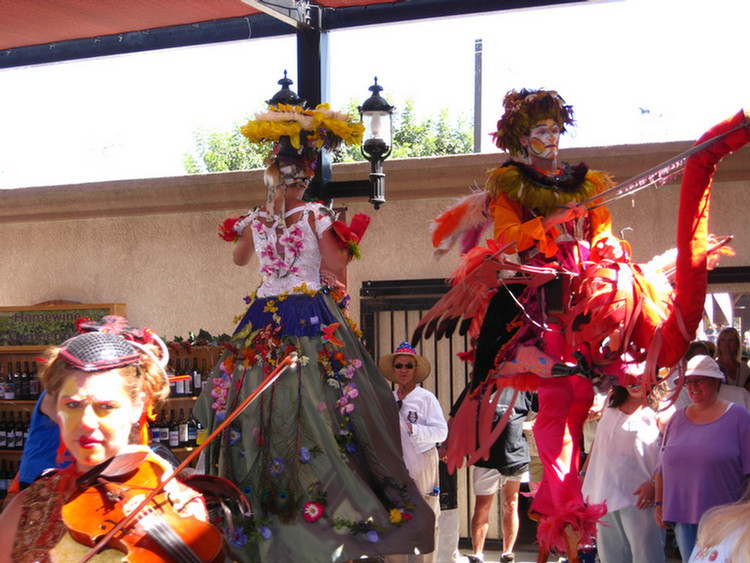
The birds were loose in the wine area
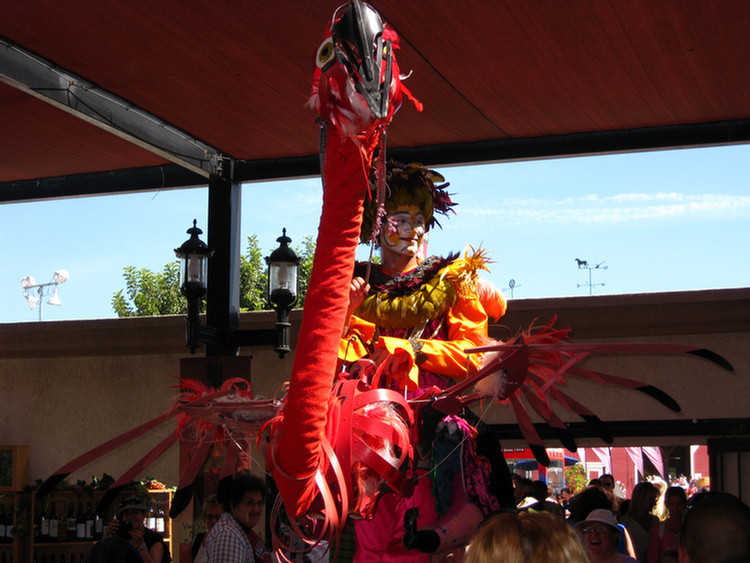
He walked like he had had a few

Great labels
Off To Centennial Farms
Did You Know? - Centennial Farm is a three-acre working farm at the OC Fair & Event Center created to educate youth about agriculture and its importance to daily life. The Farm is home to fruit and vegetable gardens, livestock, and the Millennium Barn. Children and adults can view pigs, chickens, cattle, goats and more while strolling though gardens of lush vegetation. We do ask that you please do not pick our crops as they are used for educational purposes. Centennial Farm offers tours as well as general public hours.

Paul should have entered several of these category
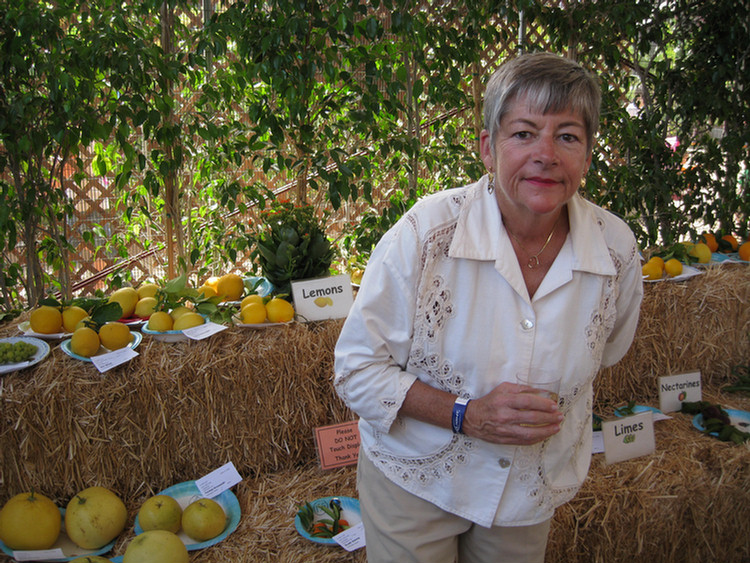
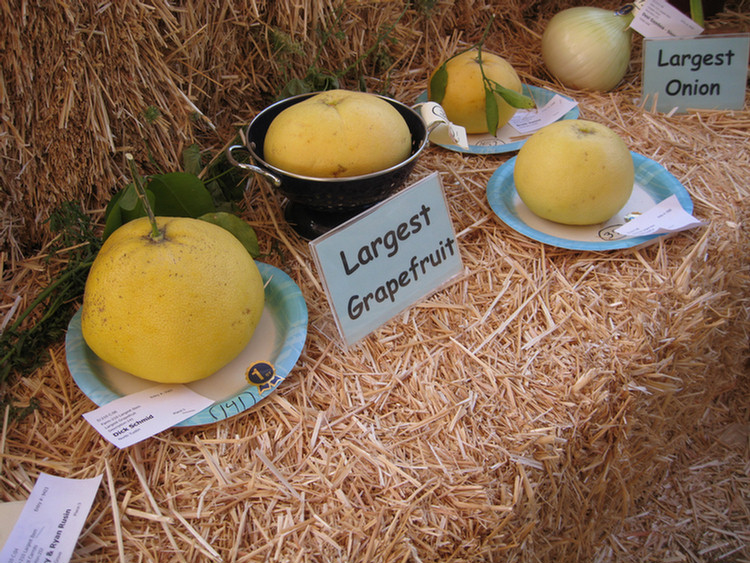
Lucy's Birds



The Baby Pigs Were Born Yesterday, July 9th 2009
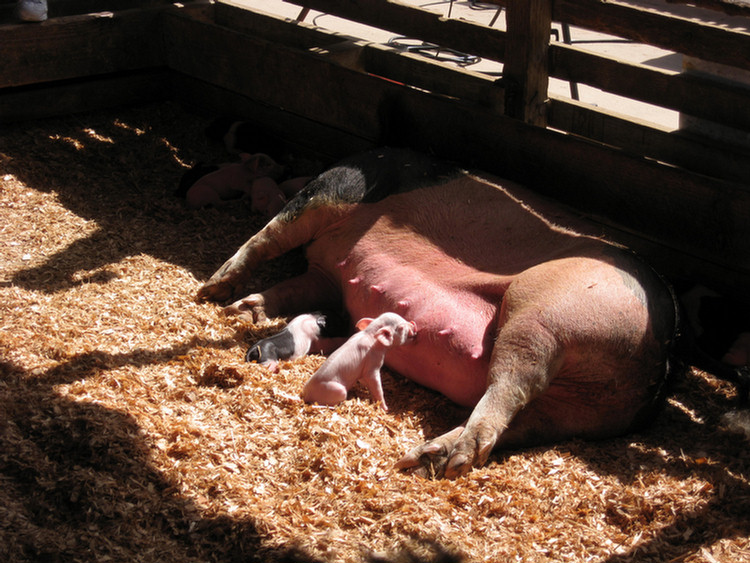
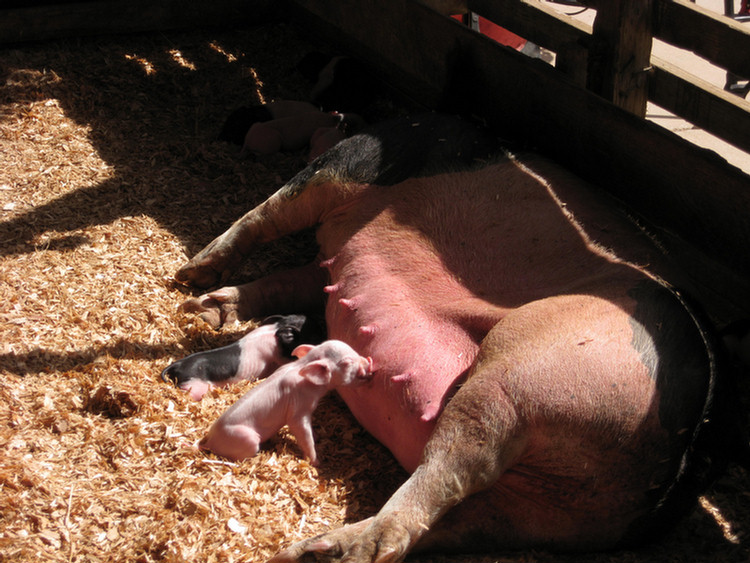
More Farm...

Crafts & Hobbies


We Went On The Skyway To See The Fair From Above


The place was packed
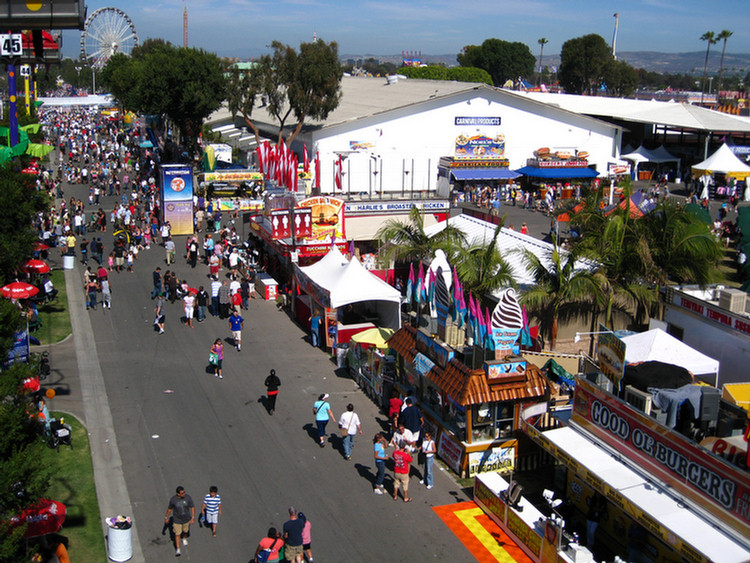


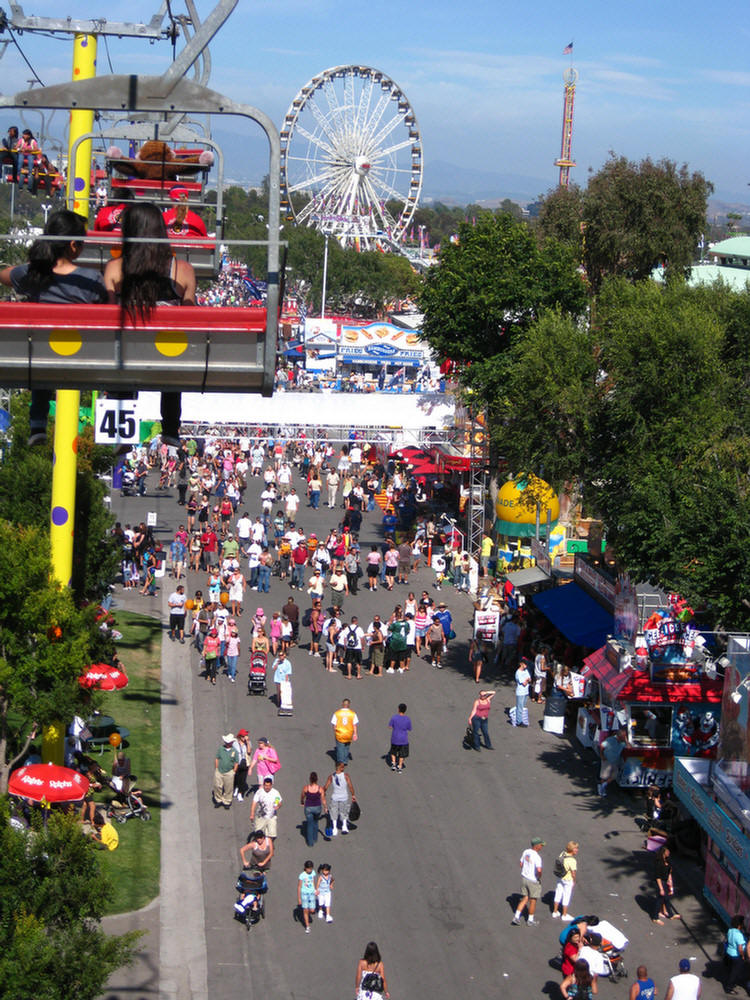
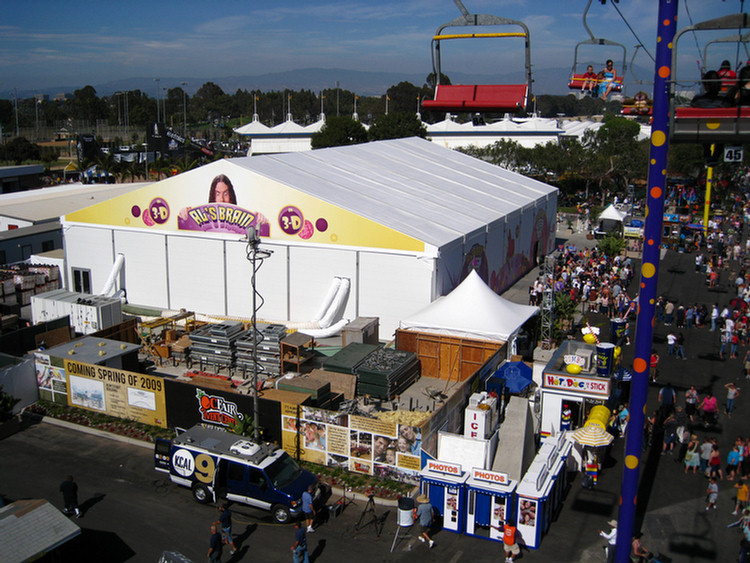
Main State Area


New building between the two older ones

Rides were going strong

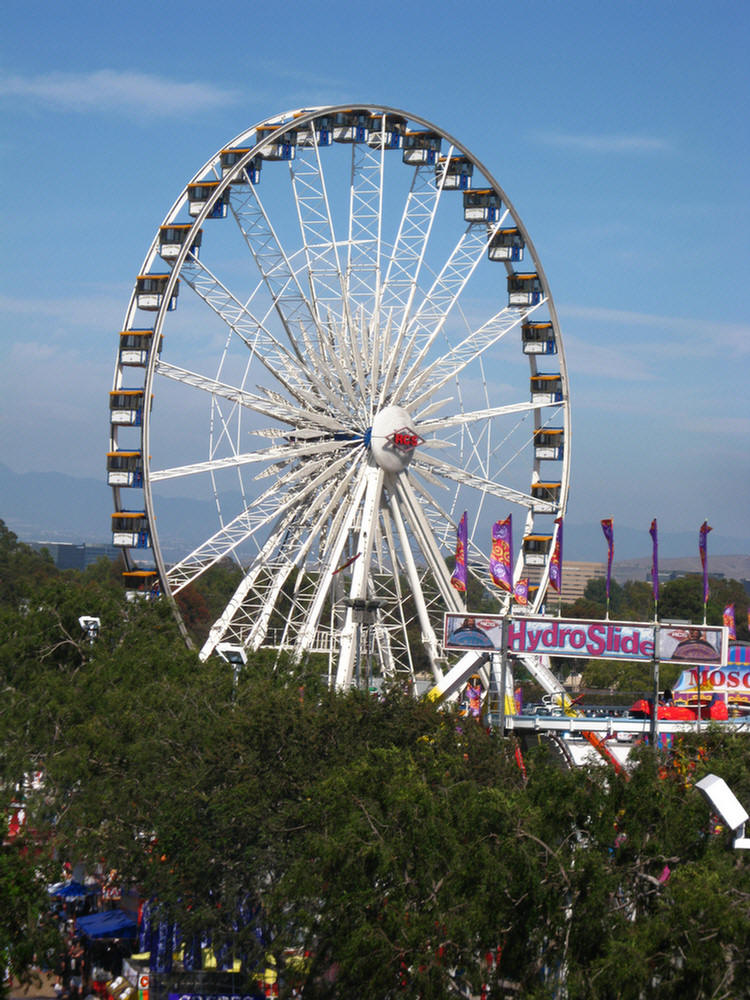
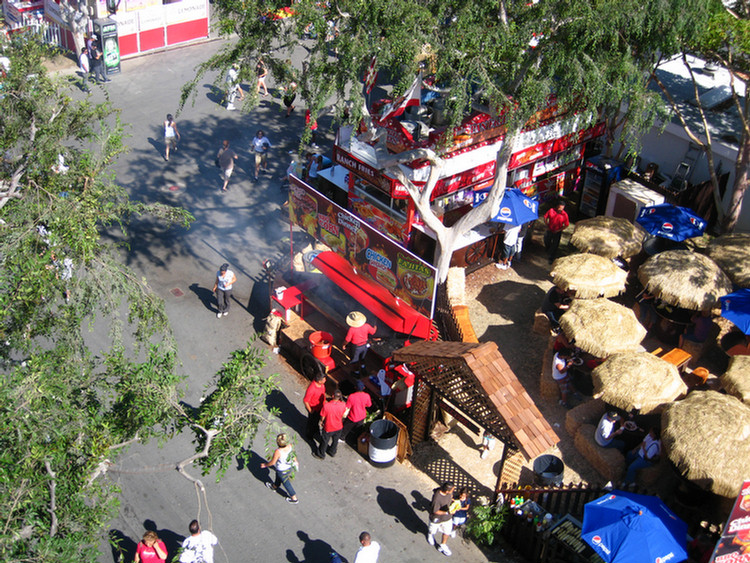
Food everywhere

The sports area had skate boarders performing
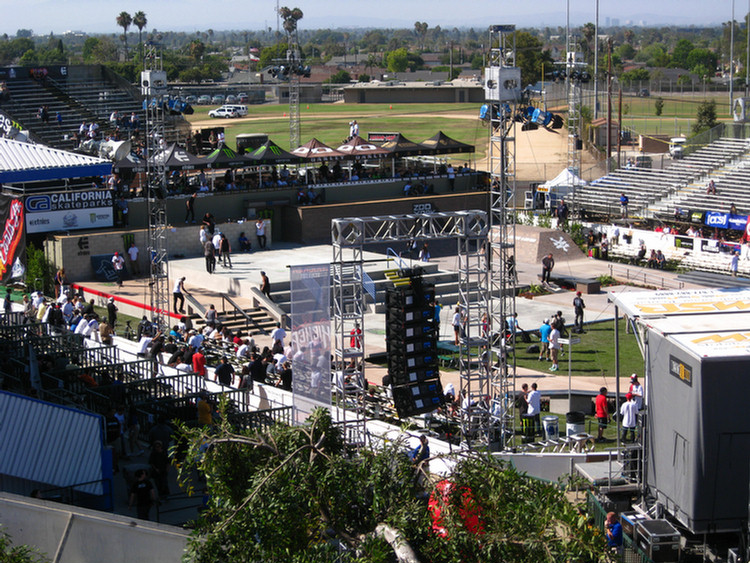
It is a nice little area

Sue wants to ride on the swing
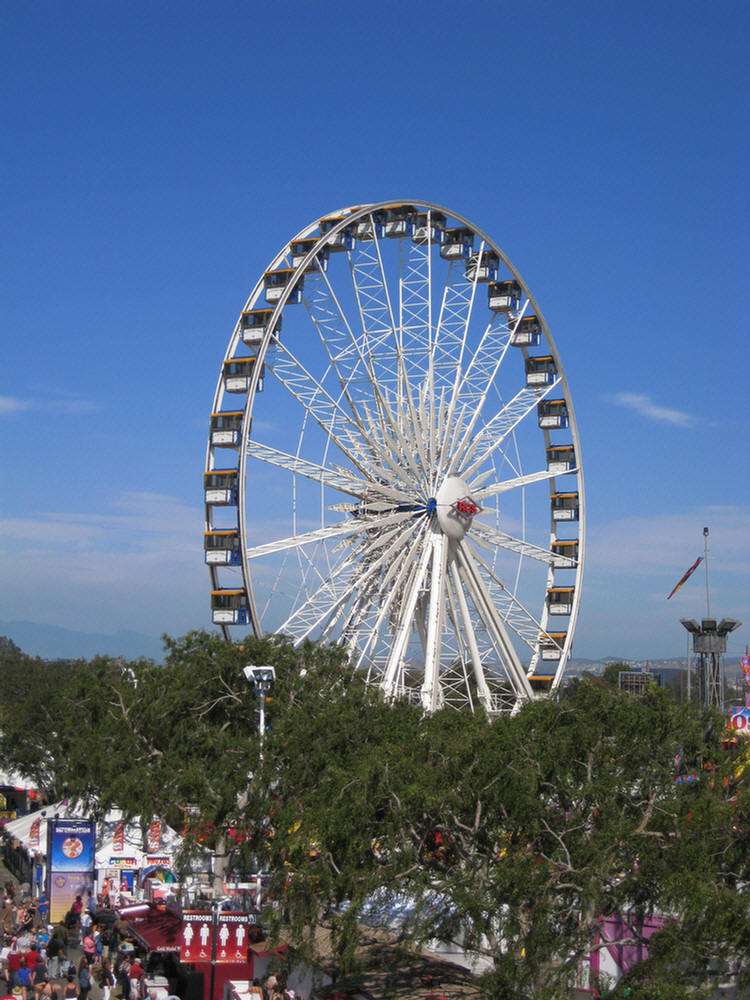
Miles into the sky
Yes... Sue Got Paul To Go On The Ferris Wheel Again
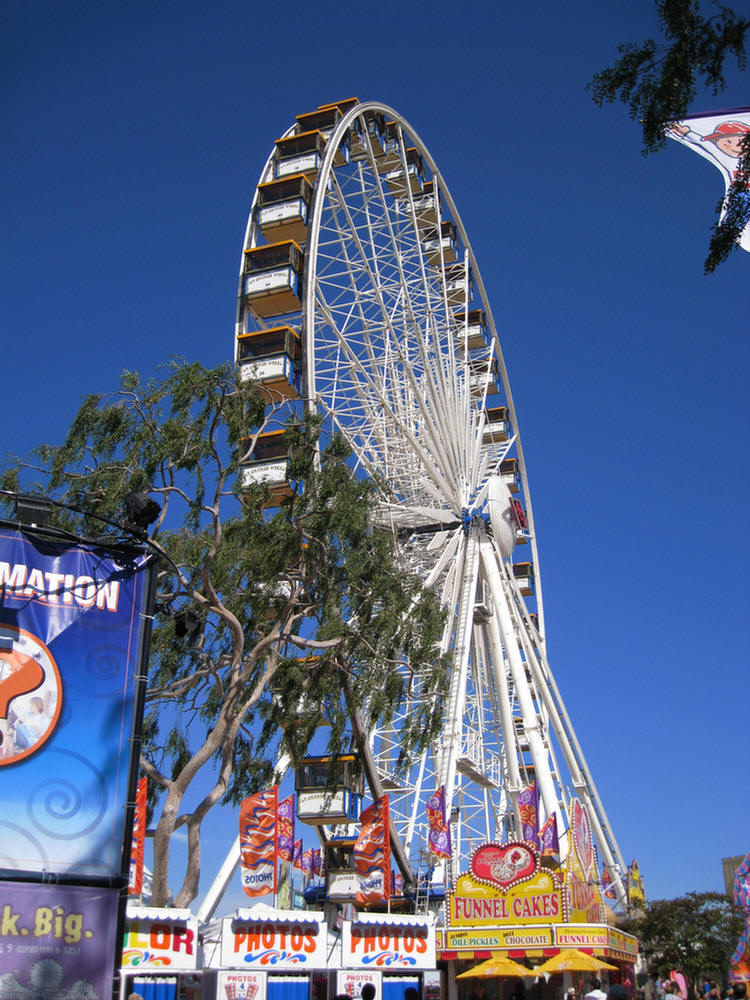

The worms eye view
Did You Know? -The first ferris wheel was designed by George W. Ferris, a bridge-builder from Pittsburgh, Pennsylvania. Ferris began his career in the railroad industry and then pursued an interest in bridge building. He understood the growing need for structural steel, Ferris founded G.W.G. Ferris & Co. in Pittsburgh, a
firm that tested and inspected metals for railroads and bridge builders.
He built the Ferris Wheel for the 1893 World's Fair, which was held in Chicago to commemorate the Eiffel Tower. Gustave Eiffel had built the tower for the Paris World's Fair of 1889, which honored the 100th anniversary of the French Revolution.
Finding a suitable design proved difficult: Architect Daniel H. Burnham, who was in charge of selecting the project for the Chicago World's Fair, complained at an engineer's banquet in 1891 about having found nothing that "met the expectations of the people". Among the audience was George Washington Gale Ferris Jr., owner of a firm that tested iron and steel. He had an inspiration and scribbled the design for the Ferris Wheel on a napkin during the dinner.
It was considered an engineering wonder: two 140-foot steel towers supported the wheel; they were connected by a 45-foot axle, the largest single piece of forged steel ever made up until that time. The wheel section had a diameter of 250 feet and a circumference of 825 feet. Two 1000-horsepower reversible engines powered the ride. Thirty-six wooden cars held up to sixty riders each. The ride cost fifty cents and made $726,805.50 during the World's Fair. The original Ferris Wheel was destroyed in 1906, but there are other ferris wheels at theme parks and carnivals everywhere.

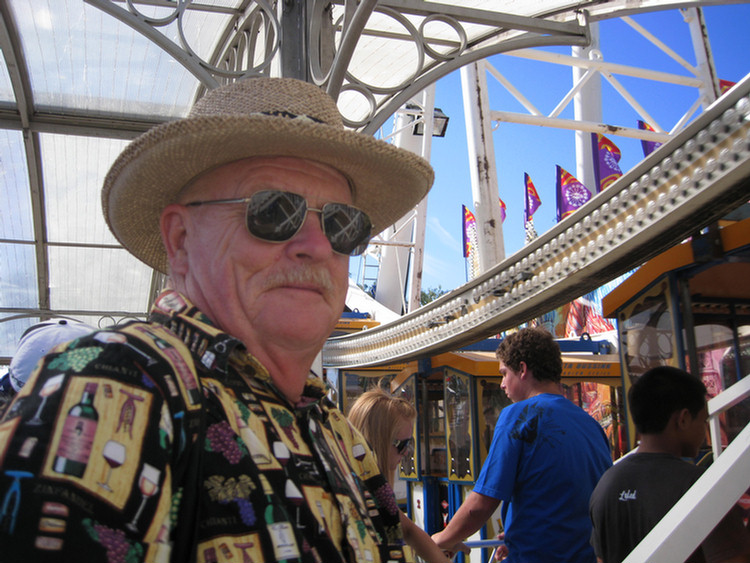
Terrified, he climbs into the gondola of death

"See Paul, this is NOT scary... Is it?"
Did You Know? -Fear is an emotional response to threats and danger. It is a basic survival mechanism occurring in response to a specific stimulus, such as pain or the threat of pain. Psychologists John B. Watson, Robert Plutchik, and Paul Ekman have suggested that fear is one of a small set of basic or innate emotions. This set also includes such emotions as joy, sadness, and anger. Fear should be distinguished from the related emotional state of anxiety, which typically occurs without any external threat. Additionally, fear is related to the specific behaviors of escape and avoidance, whereas anxiety is the result of threats which are perceived to be uncontrollable or unavoidable. Worth noting is that fear always relates to future events, such as worsening of a situation, or continuation of a situation that is unacceptable.

Up, wp, and away
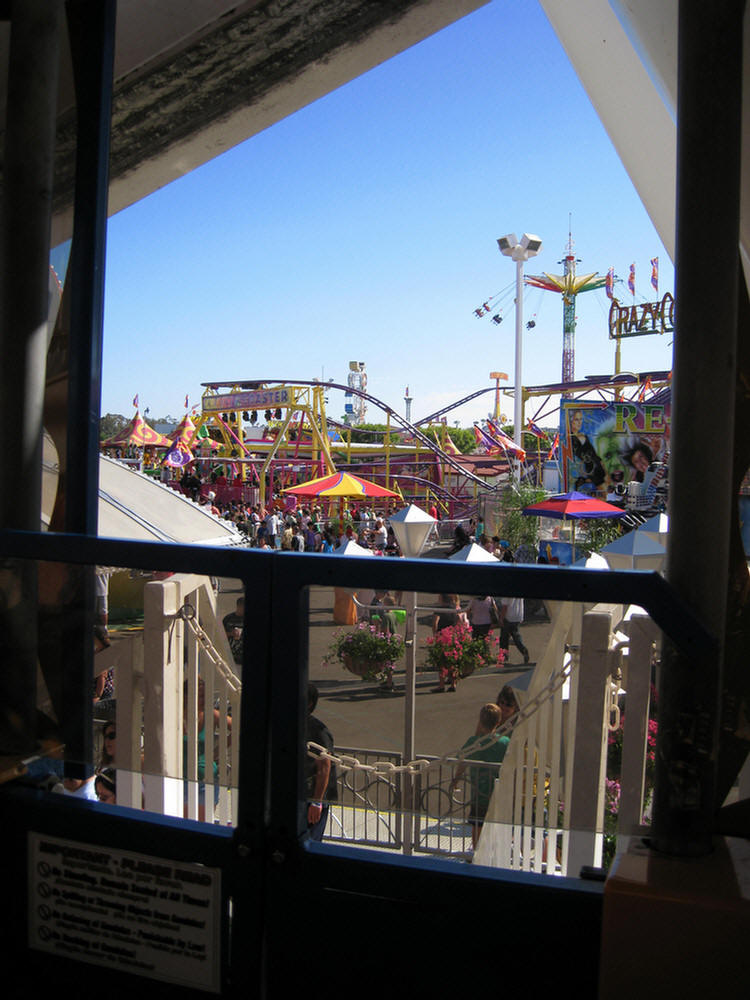

All parking lots were jammed... Hence our 30 minute walk to get to the fair
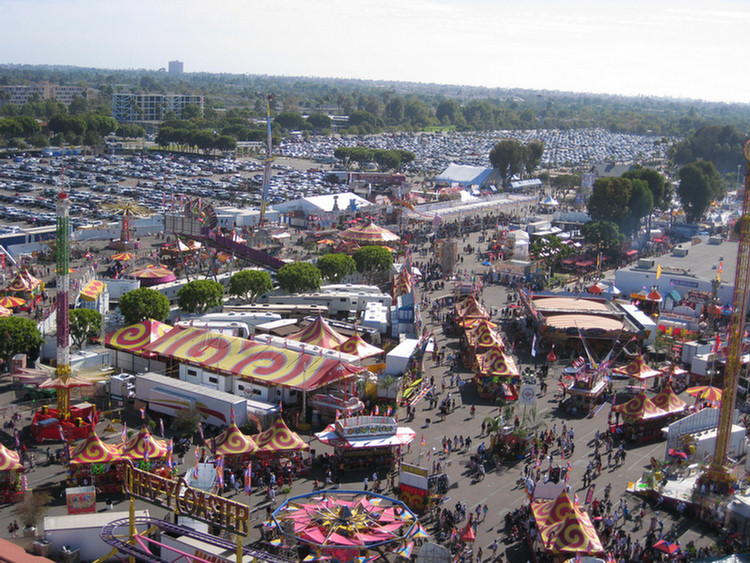


Held up by a few little pieces of pipe welded together
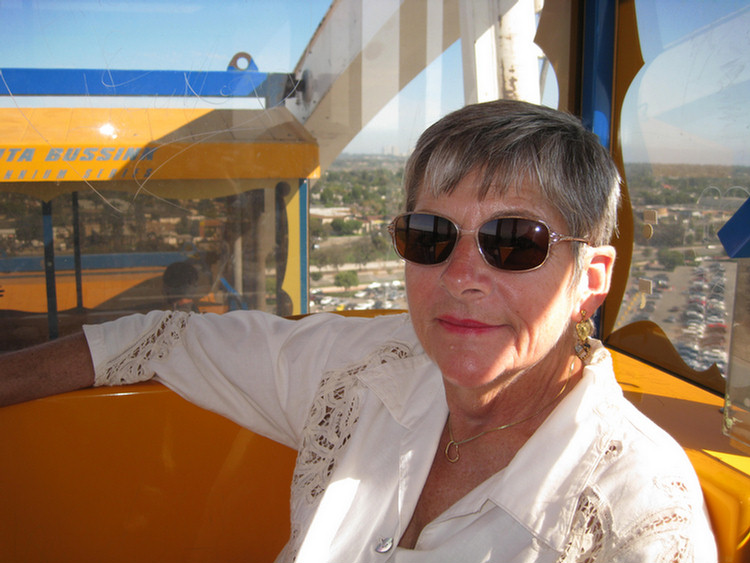
The woman knows no fear!
Back Down On Earth....

Does not seem to be very interested!
Did You Know? -Sheep are exclusively herbivorous mammals. Like all ruminants, sheep have a complex digestive system composed of four chambers, allowing them to break down cellulose from stems, leaves, and seed hulls into simpler carbohydrates. When sheep graze, vegetation is chewed into a mass called a bolus, which is then passed into the first chamber: the rumen. The rumen is a 5- to 10-gallon (19–38 l) organ in which feed is fermented via a symbiotic relationship
with the bacteria, protozoa, and yeasts of the gut flora.
The bolus is periodically regurgitated back to the mouth as cud for additional chewing and salivation.
Cud chewing is an adaptation allowing ruminants to graze more quickly in the morning, and then fully chew and digest feed later in the day. This is beneficial as grazing, which requires lowering the head, leaves sheep vulnerable to predators, while cud chewing does not.
During fermentation, the rumen produces gas that must be expelled; disturbances of the organ, such as sudden changes in a sheep's diet, can cause potentially fatal conditions such as bloat. After fermentation in the rumen, feed passes in to the reticulum and the omasum; special feeds such as grains may bypass the rumen altogether. After the first three chambers, food moves in to the abomasum for final digestion before processing by the intestines. The abomasum is the only one of the four chambers analogous to the human stomach (being the only one that absorbs nutrients for use as energy), and is sometimes called the "true stomach".

Did You Know? - Flock dynamics in sheep are, as a rule, only exhibited in a group of four or more sheep. Fewer sheep may not react as normally expected when alone or with few other sheep.
For sheep, the primary defense mechanism is simply to flee from danger when their flight zone is crossed. Secondly, cornered sheep may charge or threaten to do so through hoof stamping and aggressive posture. This is particularly true for ewes with newborn lambs.
In displaying flocking, sheep have a strong lead-follow tendency, and a leader often as not is simply the first sheep to move. However, sheep do establish a pecking order through physical displays of dominance.
Dominant animals are inclined to be more aggressive with other sheep, and usually feed first at troughs. Primarily among rams, horn size is a factor in the flock hierarchy. Rams with different size horns may be less inclined to fight to establish pecking order, while rams with similarly sized horns are more so.

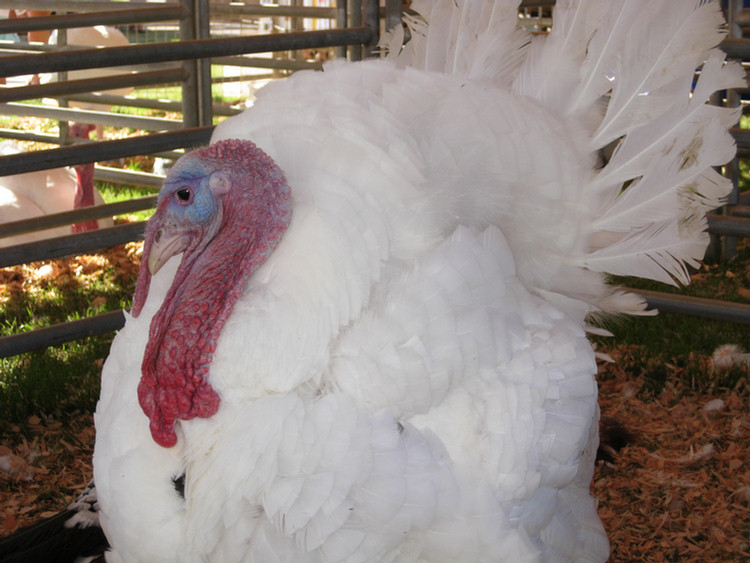
Mr. Turkey
Did You Know? -A turkey is either of two living species of large birds in the genus Meleagris. One species, Meleagris gallopavo, commonly known as the Wild Turkey, is native to the forests of North America. The other species, Meleagris ocellata, known as the Ocellated Turkey, is native to the forests of the Yucatán Peninsula in
Mexico.
The Domestic turkey is a descendant of the Wild Turkey and features prominently in the U.S. holiday of Thanksgiving.
Turkeys are classed in the taxonomic order of Galliformes. Within this order they are relatives of the family/subfamily Tetraonidae (grouse). Turkeys have a distinctive fleshy wattle that hangs from the underside of the beak, and a fleshy protuberance that hangs from the top of its beak called a snood. With wingspans of 1.5–1.8 meters (almost 6 feet), the turkeys are by far the largest birds in the open forests in which they live. As with many Galliform species the female (hen) is smaller than the male (tom or gobbler) and is much less colorful.
While large domesticated turkeys are generally unable to fly, smaller, lighter domesticated turkeys known as heritage turkeys and wild turkeys can fly well enough. In domesticated turkeys the ability to fly depends directly on weight, while even heavy adult wild turkeys can fly well enough to avoid predators by taking off and flying up to 100 yards and perching in tree branches. Turkey poults (chicks) cannot fly for the first two weeks after hatching.
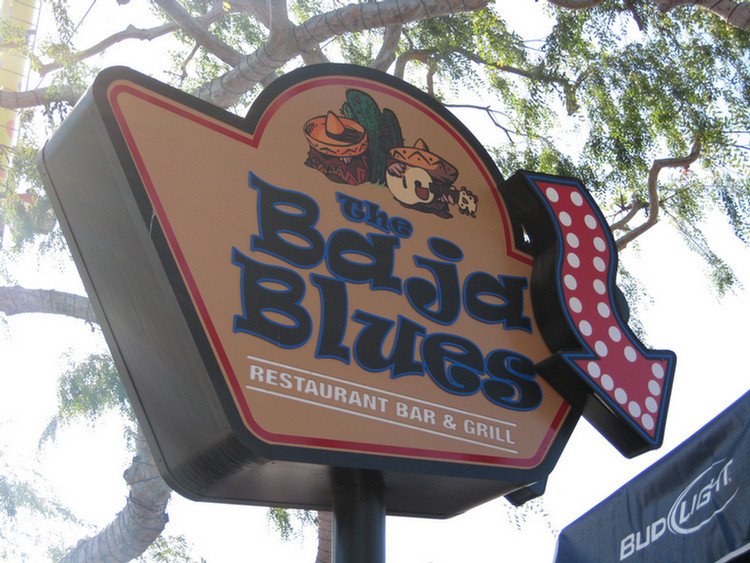
Sue can eat here... if hungry
I Remember The Old Elmac's

The good old days
Did You Know? -1.1 GENERAL. THE MULTI-ELMAC AF-67 Trans-Citer is a ten-tube variable frequency or crystal controlled seven band transmitter or exciter. All circuits are simultaneously switched to the desired band by a single band switch lever.
Designed as a complete transmitter for mobile or fixed installations, or an exciter to drive a higher power transmitter. When used as an exciter the 500 ohm tap on modulation transformer can be used to drive the higher power modulators.
1.2 DIMENSIONS. The maximum external dimensions of the AF-67 Trans-citer, excluding projections of control knobs, is 11 1/4 inches wide, 7 inches high, and 8 1/2 inches deep behind panel. Approximate weight is 18 pounds.
1.3 CIRCUIT DESCRIPTION. The AF-67 Trans-citer employs a variable frequency oscillator with output on wither 1.75 to 2.0 Mc. or 3.5 to 4.0 Mc. In addition to the V.F.O. feature, two crystal positions are included for operation on two spot frequencies. Any crystal that will work straight through, double of quadruple to the desired frequency may be used. The oscillator circuit employs a voltage regulator tube to maintain the plate voltage at a constant level.
The multiplier stages are broad tuned with a front panel control for peaking the final grid, insuring best performance on all bands. The audio circuit is designed to use either a carbon microphone or a low output microphone such as a crystal or dynamic. A slide switch on the rear apron on the AF-67 Trans-citer sets up the circuit for use with either type of microphone. A reactance tube modulator is incorporated in the variable frequency oscillator circuit for narrow-band-frequency-modulation. The variable frequency oscillator dial scale is directly calibrated in megacycles for each of the amateur bands.
1.4 TUBE COMPLIMENT. The AF-67 Trans-citer is supplied complete with all tubes, tested in the individual unit, as follows: 6AK6 Oscillator, 6BJ6 Reactance Modulator. 6AG5 Buffer-multiplier. 6AQ5RF Driverand 6146 Final RF Amplifier, 6AU6 Speech amplifier, 12AU7 AF Driver, 5881 (2)PP Modulators, OB2Voltage regulator and #44 (2) Pilot Bulbs
1.5 OUTPUT. The AF-67 Trans-citer is designed for use with a resonant antenna coupled to its output with a transmission line of 50 to 300 ohms impedance. Other impedance or balanced lines can be coupled through the use of an antenna tuning device. When used as an exciter the coupling link of the high powered final can be directly connected to the AF-67 with a suitable length of coaxial cable. The MULTI-ELMAC AF-67 is designed for a maximum plate power input of 60 (sixty) watts. Maximum ratings for this Trans-citer are 600 volts at 100 milliamperes; or 500 volts at 120 milliamperes. Full 100% modulation occurs when the modulator plate current swings to about 60% of the final plate current with normal voice frequencies.
1.6 AUDIO. The modulation transformer is provided with a 500 ohm output tap brought to the power plug for driving the grids of high powered modulators. The 5881's will deliver approximately 40 watts of audio with a plate supply of 500 volts
The New Building Houses Hobbies And Foods
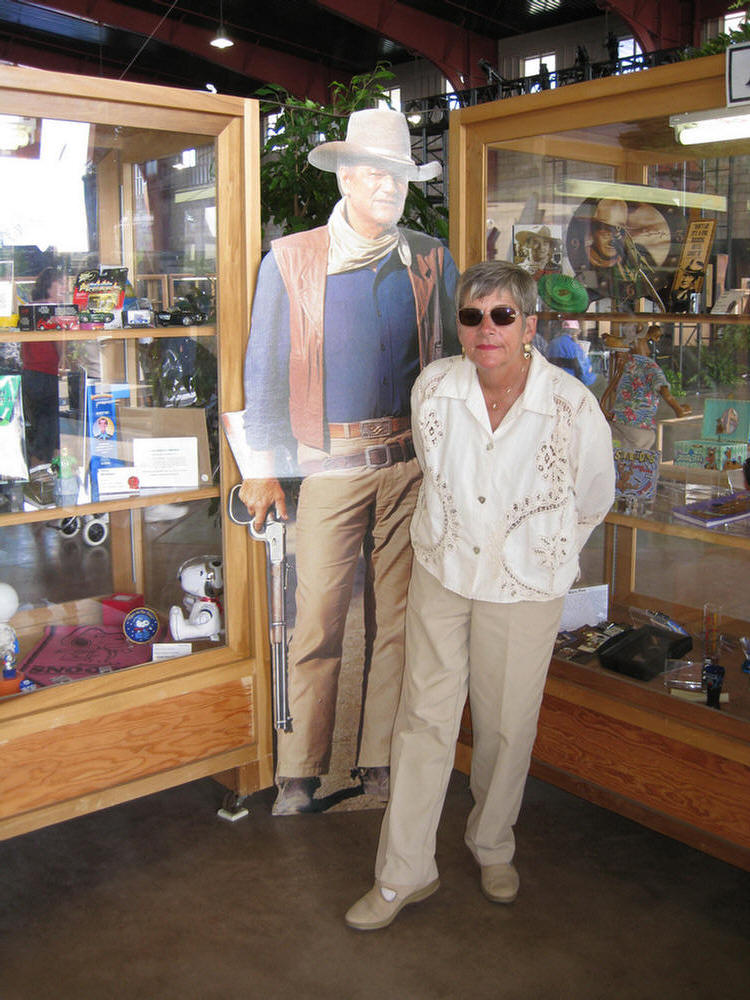
John and Sue

The new building